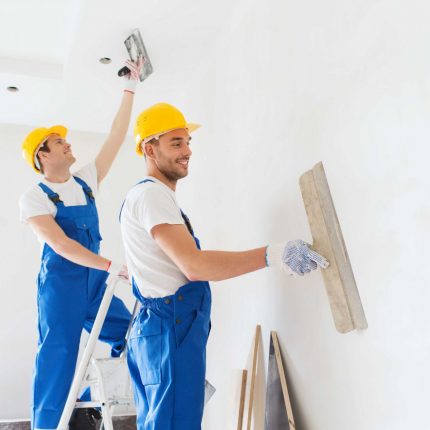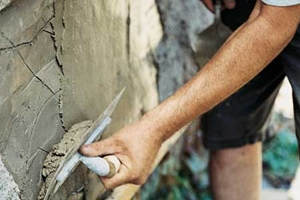The Ultimate Guide to Selecting a Proficient Stucco Contractor for Your Demands
The Ultimate Guide to Selecting a Proficient Stucco Contractor for Your Demands
Blog Article
The Benefits of Picking Stucco for Outside Finishes
Picking stucco for exterior surfaces provides a compelling case for home owners looking for a combination of toughness, visual adaptability, and power performance. Recognized for its capacity to sustain numerous climate problems, stucco not just lowers long-term maintenance expenses however likewise enhances the aesthetic allure of any kind of home with its array of appearances and shades.

Sturdiness and Longevity
Stucco, a blend of lime, sand, and cement, uses exceptional toughness and longevity for outside coatings. This material is especially immune to severe climate condition, including heavy rain, solid winds, and extreme temperature levels. Its structure permits it to withstand wetness seepage, therefore reducing the risk of mold and mold, which can endanger the integrity of other exterior materials.
Stucco is understood for its reduced upkeep needs, as it does not call for regular repainting or securing, unlike timber or vinyl exterior siding. When properly set up, stucco can last for numerous decades, making it a cost-efficient choice in the long run. Furthermore, stucco's resistance to fracturing and fading ensures that the visual appeal of the exterior remains intact in time.
One more considerable benefit of stucco is its fire resistance, an essential factor to consider for many homeowners. Unlike timber, stucco does not shed conveniently, supplying an included layer of safety (stucco contractor). Overall, the resilience and durability of stucco make it an ideal alternative for those seeking a reputable and enduring outside coating that can hold up against the examination of time and ecological obstacles
Visual Versatility


Furthermore, stucco can be easily colored utilizing important pigments, giving an extensive combination to pick from. This convenience in tone permits personalization, allowing structures to integrate with their environments or stand out as unique landmarks. Additionally, stucco can be integrated with other materials, such as stone or wood, to create visually striking contrasts that enhance the overall façade.
The material's ability to be molded into different shapes further adds to its visual allure. Personalized attributes like arcs, trim, and ornamental aspects can be effortlessly integrated into stucco designs, enriching the aesthetic intricacy of a structure. Generally, the visual flexibility of stucco not only enhances the aesthetic allure of a property but also mirrors the individual style and preferences of the home owner, making it a superb option for exterior finishes.
Power Effectiveness
Energy-efficient building products are necessary for minimizing energy intake and decreasing utility costs, and stucco attracts attention in this respect. Its distinct make-up and application add to improved thermal efficiency, allowing buildings to keep steady indoor temperature levels throughout the year.
Stucco has a high thermal mass, meaning it can keep and soak up warm throughout the day and release it gradually during the night. This property assists mitigate extreme temperature level fluctuations, lowering the reliance on home heating and cooling systems, therefore fostering energy you could try here performance. Additionally, stucco can be used over insulating products, better improving its energy-saving possibility.
Additionally, the seamless nature of stucco reduces air seepage, which can bring about unwanted warm loss or gain - stucco contractor. This impermeable obstacle not only boosts comfort levels yet additionally decreases the workload on heating and cooling systems, ultimately lowering energy costs
Moreover, stucco's reflective top qualities can lower heat absorption, especially in warmer climates, which assists in preserving cooler interior settings and decreases dependence on cooling. By picking stucco for outside homeowners, finishes and builders can make considerable strides towards power performance, promoting both environmental sustainability and economic More about the author financial savings.
Reduced Maintenance Requirements
What makes stucco an enticing option for house owners seeking a low-maintenance outside surface? The durability and resilience of stucco are vital factors try this that add to its low maintenance needs.
Stucco is non-combustible and does not draw in pests, considerably lowering the possibility of damages from termites or fire. Its exterior surface is additionally resistant to mold and mold, especially when applied with a high-quality surface. Home owners can expect to carry out just occasional cleaning with water and moderate cleaning agent to maintain its appearance.
In enhancement, stucco is much less prone to breaking than various other products, especially when set up properly with ideal expansion joints. Ought to any type of fixings be needed, they are typically uncomplicated and cost-effective, negating the demand for extensive remodellings. Generally, the mix of longevity, resistance to parasites and moisture, and minimal upkeep makes stucco an exceptional selection for those focusing on a low-maintenance exterior surface.
Eco-Friendly Qualities
Picking stucco not only lines up with home owners' desires for reduced upkeep yet additionally offers significant green homes. Made mostly from all-natural materials such as concrete, lime, and sand, stucco offers a lasting alternative for outside coatings. Its manufacturing process consumes less power contrasted to artificial products, adding to a reduced carbon impact.
In addition, stucco is very resilient, which converts to a much longer lifespan and minimized demand for frequent substitutes. Stucco's thermal mass residential or commercial properties improve power efficiency by controling interior temperature levels, which can lead to decreased heating and air conditioning prices.
Moreover, stucco can be applied with low-VOC (unpredictable organic compounds) coatings and paints, reducing damaging exhausts connected with indoor air quality. Its adaptability permits an array of textures and finishes, guaranteeing aesthetic charm without jeopardizing eco-friendly honesty - stucco contractor. By picking stucco, home owners not just boost their residential property's elegance yet additionally add favorably to ecological sustainability
Final Thought
In summary, stucco provides a compelling choice for exterior finishes due to its resilience and longevity, aesthetic versatility, power performance, reduced maintenance demands, and environment-friendly residential properties. These attributes not only enhance the aesthetic allure of homes however also add to set you back financial savings and ecological sustainability. As home owners look for eye-catching and resilient structure products, stucco sticks out as an optimal option, straightening with contemporary needs for both capability and environmental obligation in household layout.
Picking stucco for outside finishes offers a compelling case for home owners seeking a mix of toughness, aesthetic adaptability, and energy performance. In general, the visual adaptability of stucco not only boosts the curb allure of a building however additionally shows the individual style and choices of the homeowner, making it a superb choice for outside finishes.
What makes stucco an attractive choice for house owners seeking a low-maintenance exterior coating? Made mainly from all-natural products such as lime, cement, and sand, stucco provides a lasting alternative for exterior surfaces.In recap, stucco presents a compelling selection for outside finishes due to its durability and long life, visual adaptability, energy effectiveness, reduced maintenance demands, and eco-friendly residential properties.
Report this page